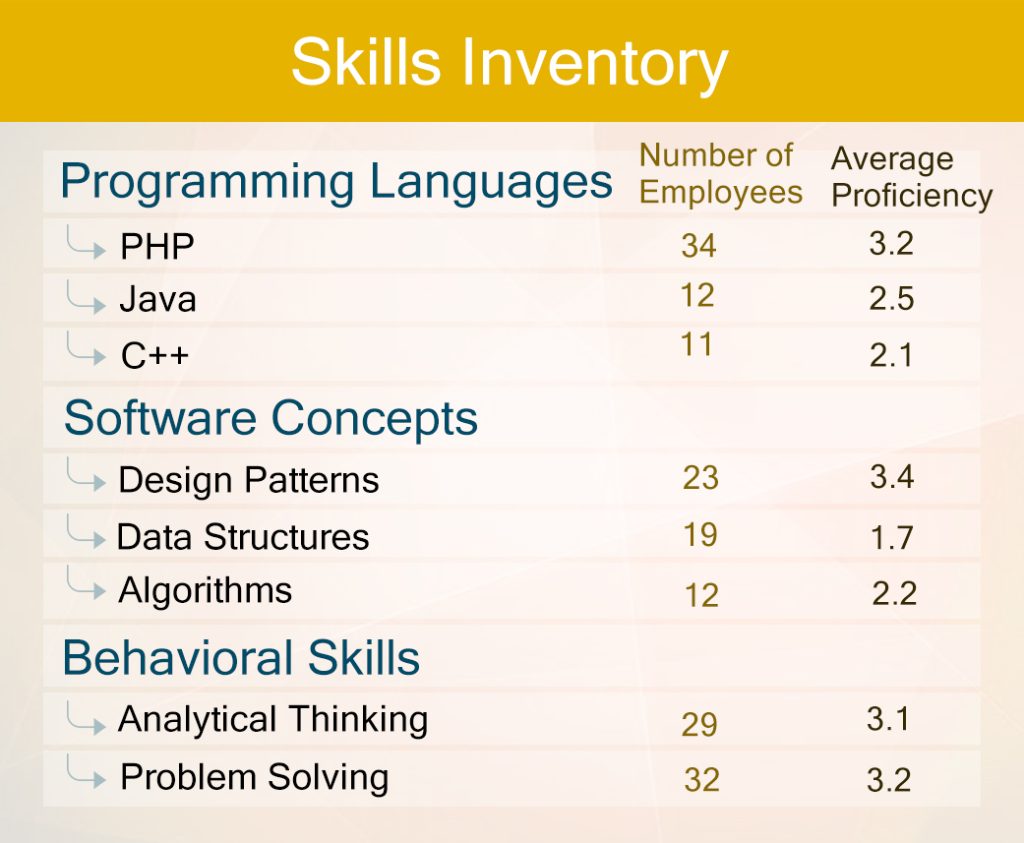The recruitment industry invests a lot of time and effort into the parsing and pulling of data from resumes and job descriptions. Once it has been extracted, resume data is matched with job descriptions to filter candidates. The whole process is quite tedious and gives rise to an urgent need for the standardization of data available on a Skills Database and to present it in a structured format.
Multiple methods like using Natural Language Processing (NLP) to compare the extracted data in a more efficient form, and Pattern Matching to match with tokens from another document, have been tried. Unfortunately, all these attempts have been unsuccessful.
Parsers are used widely for pulling information from resumes and job descriptions. However, they have their limitations. The creation of structured information like a Skills Database is a better alternative.
Continuing research on this topic has narrowed down the approach of creating a more structured skills data to the following two forms:
- Create Structured Data From Output
- Extract unstructured output from texts like resumes and job descriptions.
- Convert the unstructured output into structured output.
- Create Structured Data At Input
- Create structured data at the point of input.
Real issues when dealing with data
To be able to create structured data at the point of input, the types of data available needs to be slotted into different sub-categories. While classifying data, two major sub-categories emerge:
- Unambiguous Information:
This includes basic tags like name, email, contact number, location, names of companies previously worked at, titles, gender, etc. Parsers work well in picking up such information from the resumes and job descriptions. The reason for this being the presence of discernable patterns, like the presence of ‘@’ in email IDs. - Description of Skills:
This is the more descriptive form of information and gives the parsers a hard time analysing. Several issues arise while dealing with information on skills. One of them is different names for the same skill or different phrases being used to describe the same skill. For example, Digital Marketing can also be called Online Marketing or Web Marketing or Internet Marketing. The use of abbreviations also causes problems in the analytical process.
Another problem is that skills in isolation do not make much sense. Therefore, a need to analyse skills in a way that does not distort the meaning, arises.
Let’s examine the reality
In a typical scenario, running a parser through a person’s resume to look for Java programming skills can be helpful if you are looking for candidates with the knowledge of Java. But if the search is much more specific than that, like looking for a Java Developer who knows server-side programming in a particular development environment, with a good understanding of object oriented programming for development of software systems in the banking domain, then the parsing process fails.
Unfortunately, the parsing of resumes and job descriptions do not bring out quality structured information from the unstructured information i.e., resumes and job descriptions.
Consider two solutions
- The Simple Solution is to provide auto suggestions at the point of creation of resumes and job description. Although this straightforward approach limits the data entering process and data entered that does not correspond to any of the suggestions will still face all the above discussed issues.
- The Effective Solution to handle the problem is to avoid unstructured information. The major cause of unstructured information is not the entry of information but the documents into which the information is being added, i.e. the resumes and job description. The most logical thing to do in this case is to remove the resumes and job descriptions completely from the equation.
Applications like Linkedin work on the concept of structures but cannot be taken as an ideal example as their performance falls in the case of skills.
The Skills Profiler as a viable solution
The best way to deal with this issue would be to create a structure known as a Skills Profile where a skill set belonging to a universally known pool of skills can be added. Crunched information on skills can be stored in these structures which will make matching jobs to people faster and more efficient.
Information from such a system can be used by other industries too, including Talent Development, Market Analytics, Resource Deployment, etc.
It’s Your Skills offers a mechanism for creating a structured skills profile. At the backend, this consists of a database of skills or a Skills Ontology, one that is constantly updated. At the front-end, there is a simple user interface. The output of Skills Profiler is applicable for both jobs as well as people.
Adopting the technology is just the first step. A bigger challenge lies in adapting to the behavioral changes required in the technology. This is a vital first step towards making the talent landscape more efficient.





